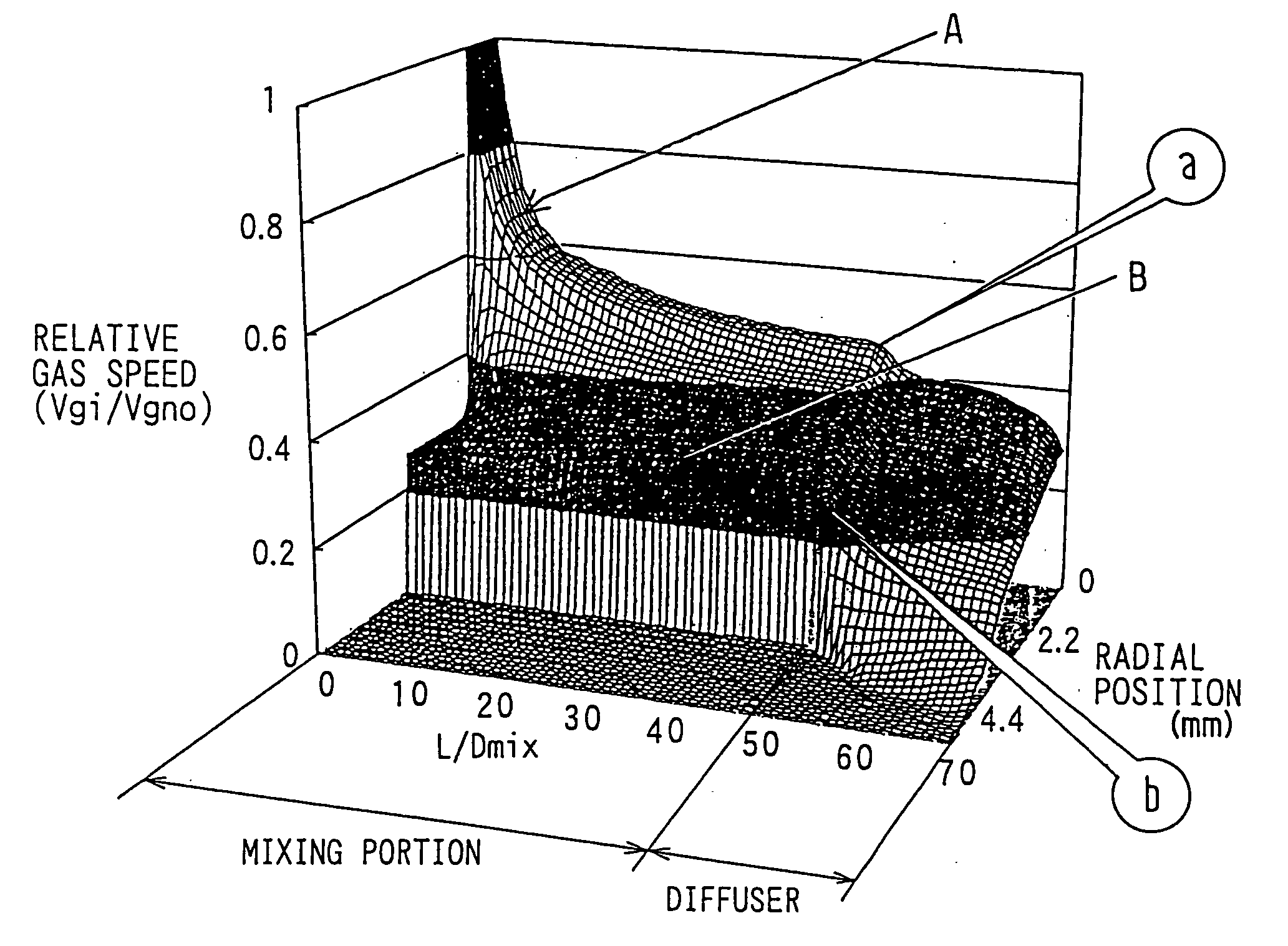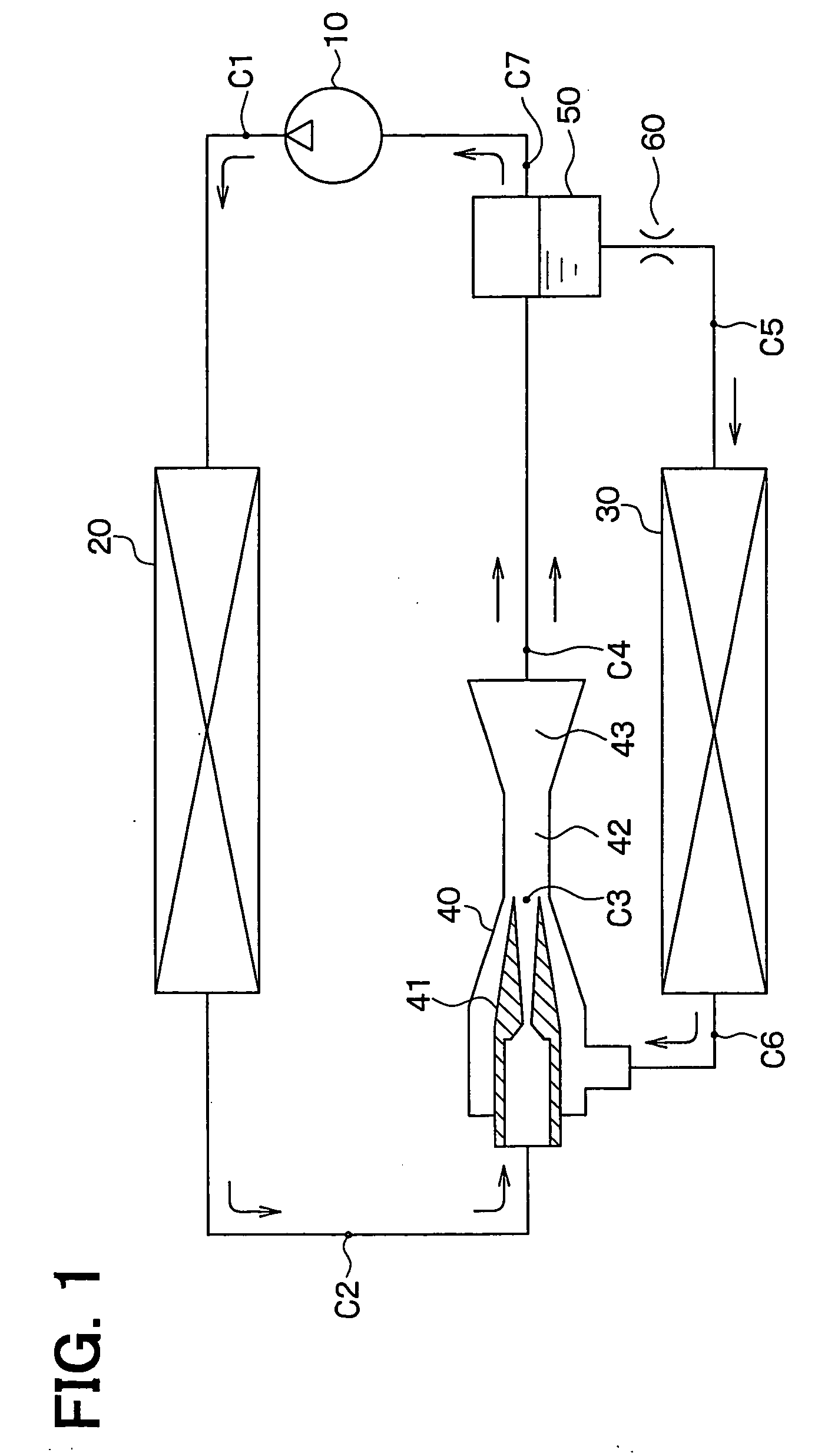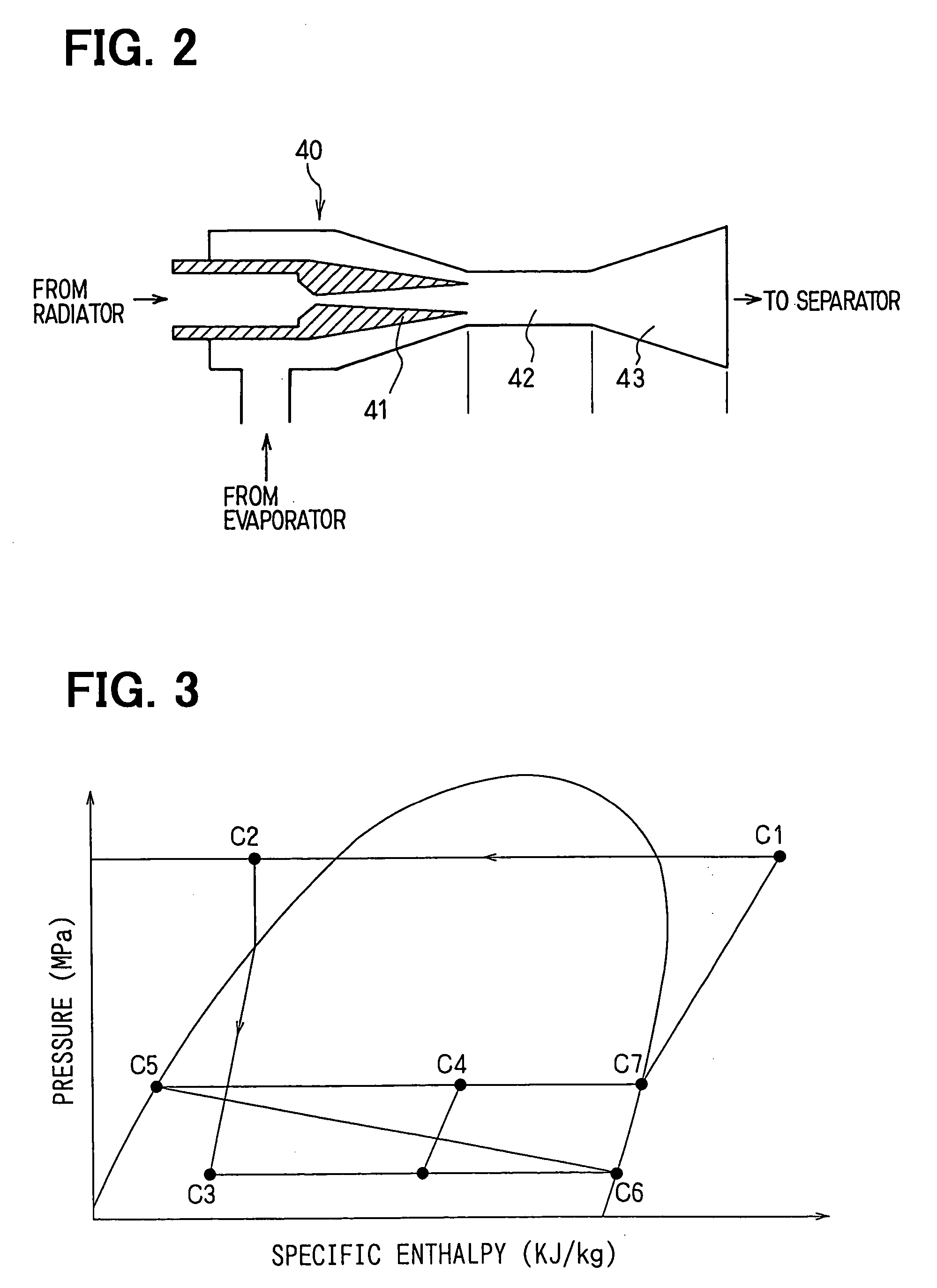Vapor-compression refrigerant cycle with ejector
a technology of ejector and refrigerant cycle, which is applied in the direction of refrigeration components, transportation and packaging, light and heating equipment, etc., can solve the problem of difficulty in improving the coefficient of performance of ejector cycl
- Summary
- Abstract
- Description
- Claims
- Application Information
AI Technical Summary
Benefits of technology
Problems solved by technology
Method used
Image
Examples
first embodiment
[0021] In the first embodiment, an ejector cycle (vapor-compression refrigerant cycle) according to the present invention is typically used for a vehicle air conditioner.
[0022] In FIG. 1, a compressor 10 is a variable displacement compressor for sucking and compressing refrigerant circulated in the ejector cycle. The compressor 10 is driven by power from a vehicle engine for a vehicle running. A radiator 20 is a high-pressure heat exchanger for cooling high-temperature and high-pressure refrigerant discharged from the compressor 10 by performing heat-exchange operation between outside air and the high-temperature and high-pressure refrigerant. Further, an evaporator 30 is a low-pressure heat exchanger for cooling air to be blown into a passenger compartment by evaporating liquid-phase refrigerant, more specifically, by performing heat-exchange operation between the air and low-pressure refrigerant.
[0023] An ejector 40 sucks refrigerant evaporated in the evaporator 30 while decompres...
second embodiment
[0045] The second embodiment of the present invention will be now described with reference to FIG. 6. In the above-described first embodiment, air to be blown into the passenger compartment is directly cooled in the evaporator 30. However, in the second embodiment, as shown in FIG. 6, after a medium is cooled in the evaporator 30 by performing a heat exchange with the refrigerant, the medium is heat-exchanged with the air to be blown into the passenger compartment in a heat exchanger 31 so that air to be blown into the passenger compartment is cooled in the heat exchanger 31. Therefore, even when a refrigerant leakage is generated in the evaporator 30, it can prevent the refrigerant from flowing into the passenger compartment.
[0046] In the second embodiment, a fluid in which an antifreeze material such as ethylene glycol is mixed in water can be used as the medium. Generally, a refrigerant flow in the evaporator 30 is set opposite to a medium flow in the evaporator 30. In this case,...
PUM
 Login to View More
Login to View More Abstract
Description
Claims
Application Information
 Login to View More
Login to View More - R&D
- Intellectual Property
- Life Sciences
- Materials
- Tech Scout
- Unparalleled Data Quality
- Higher Quality Content
- 60% Fewer Hallucinations
Browse by: Latest US Patents, China's latest patents, Technical Efficacy Thesaurus, Application Domain, Technology Topic, Popular Technical Reports.
© 2025 PatSnap. All rights reserved.Legal|Privacy policy|Modern Slavery Act Transparency Statement|Sitemap|About US| Contact US: help@patsnap.com



